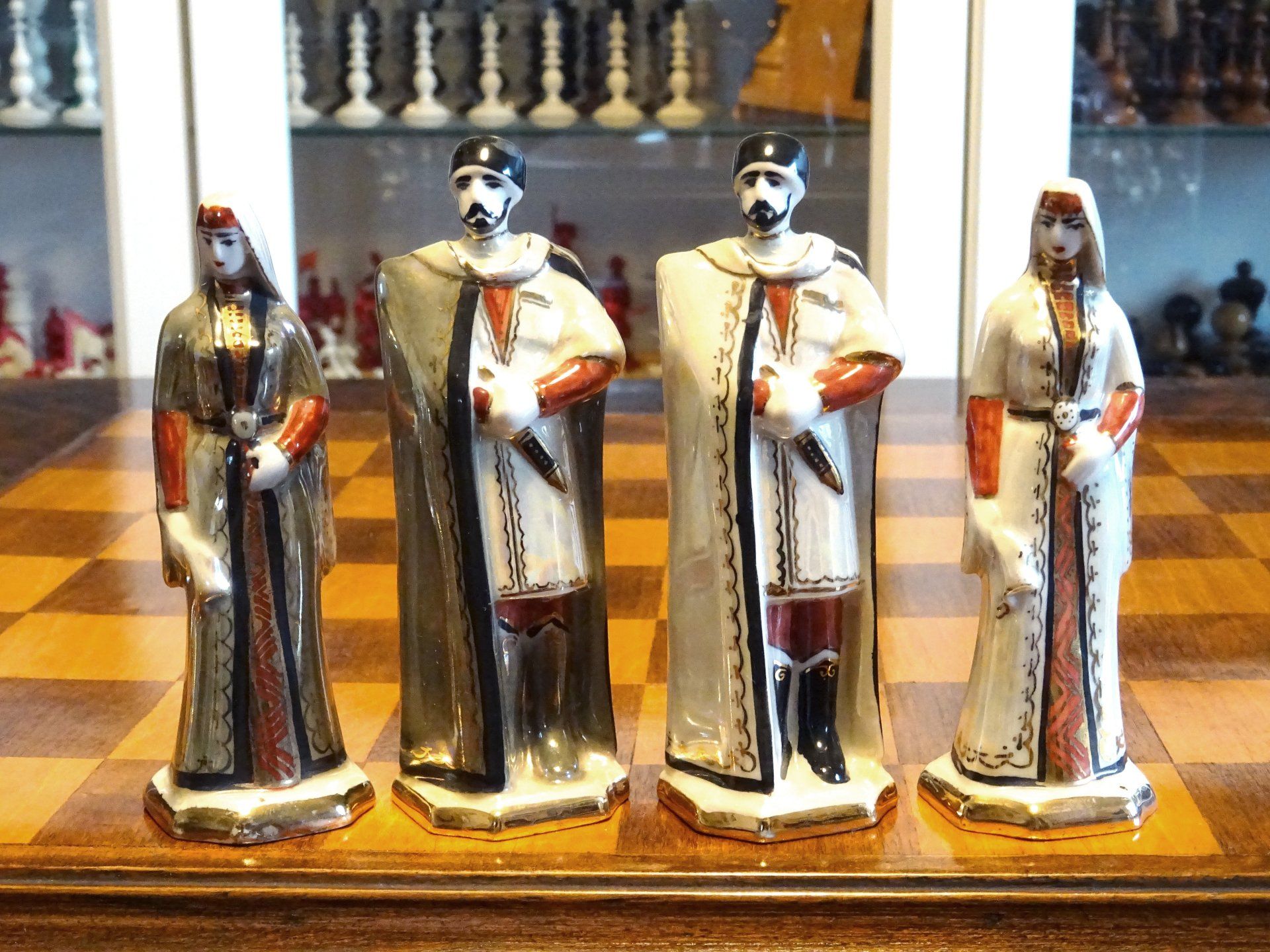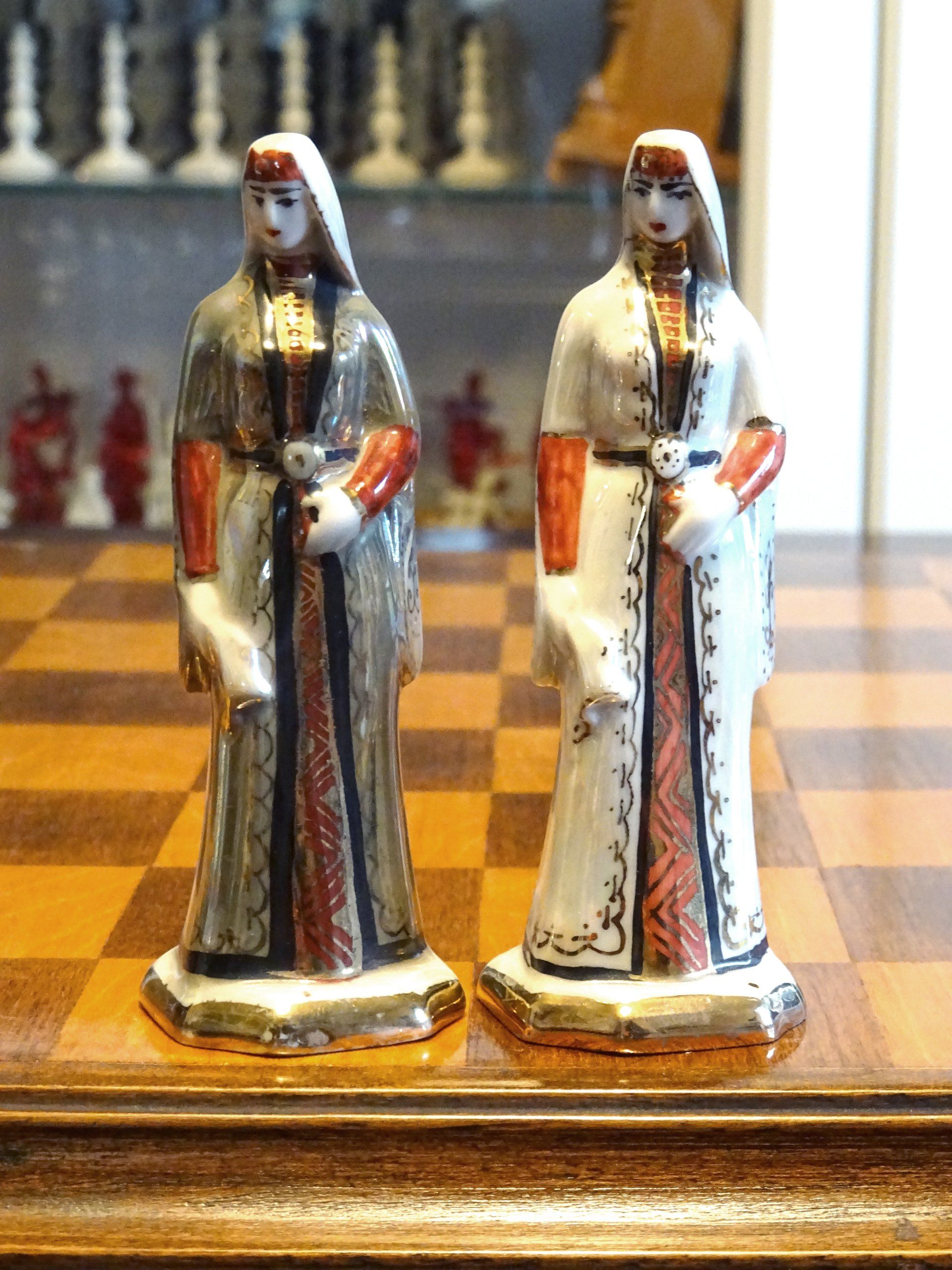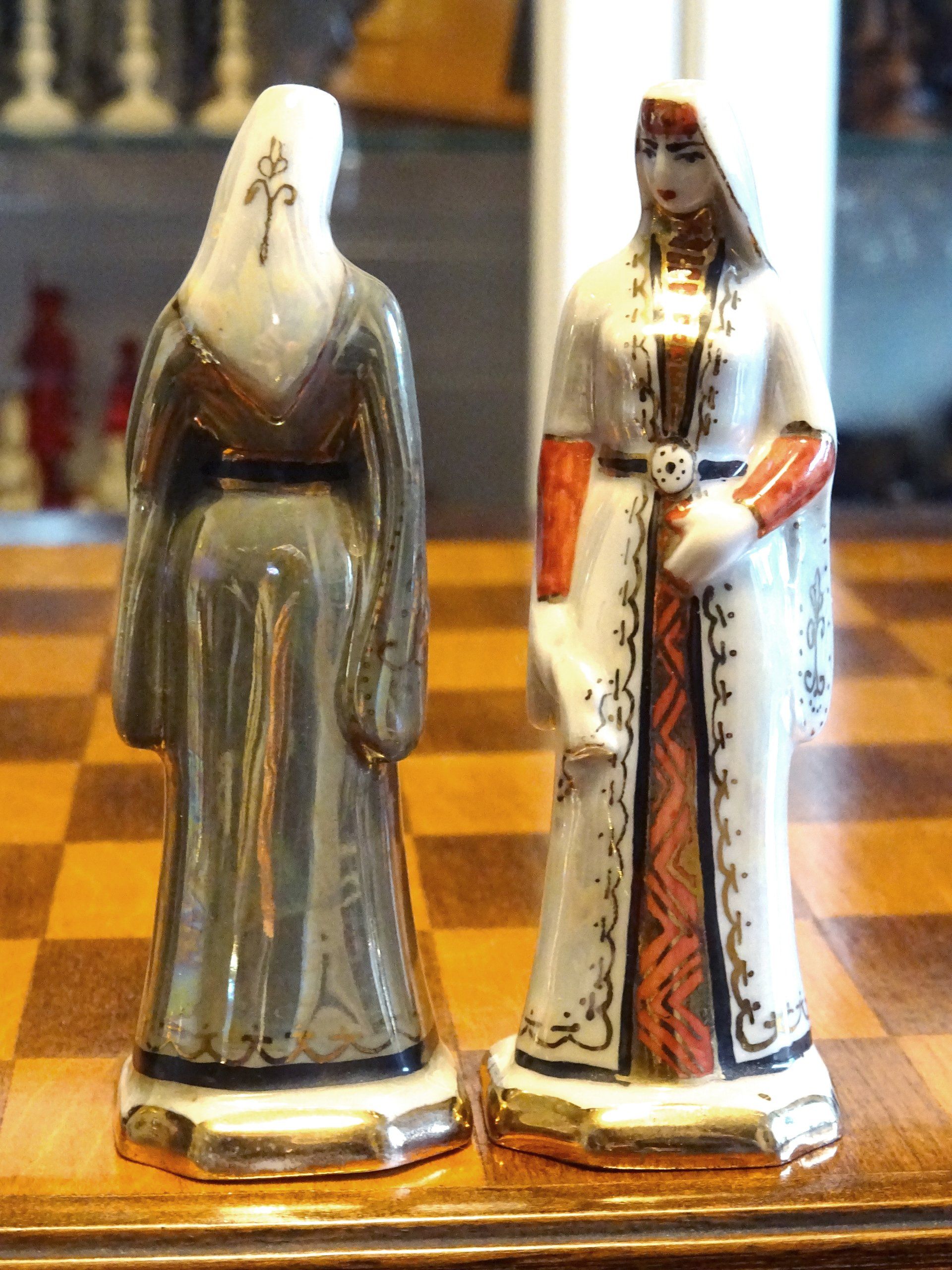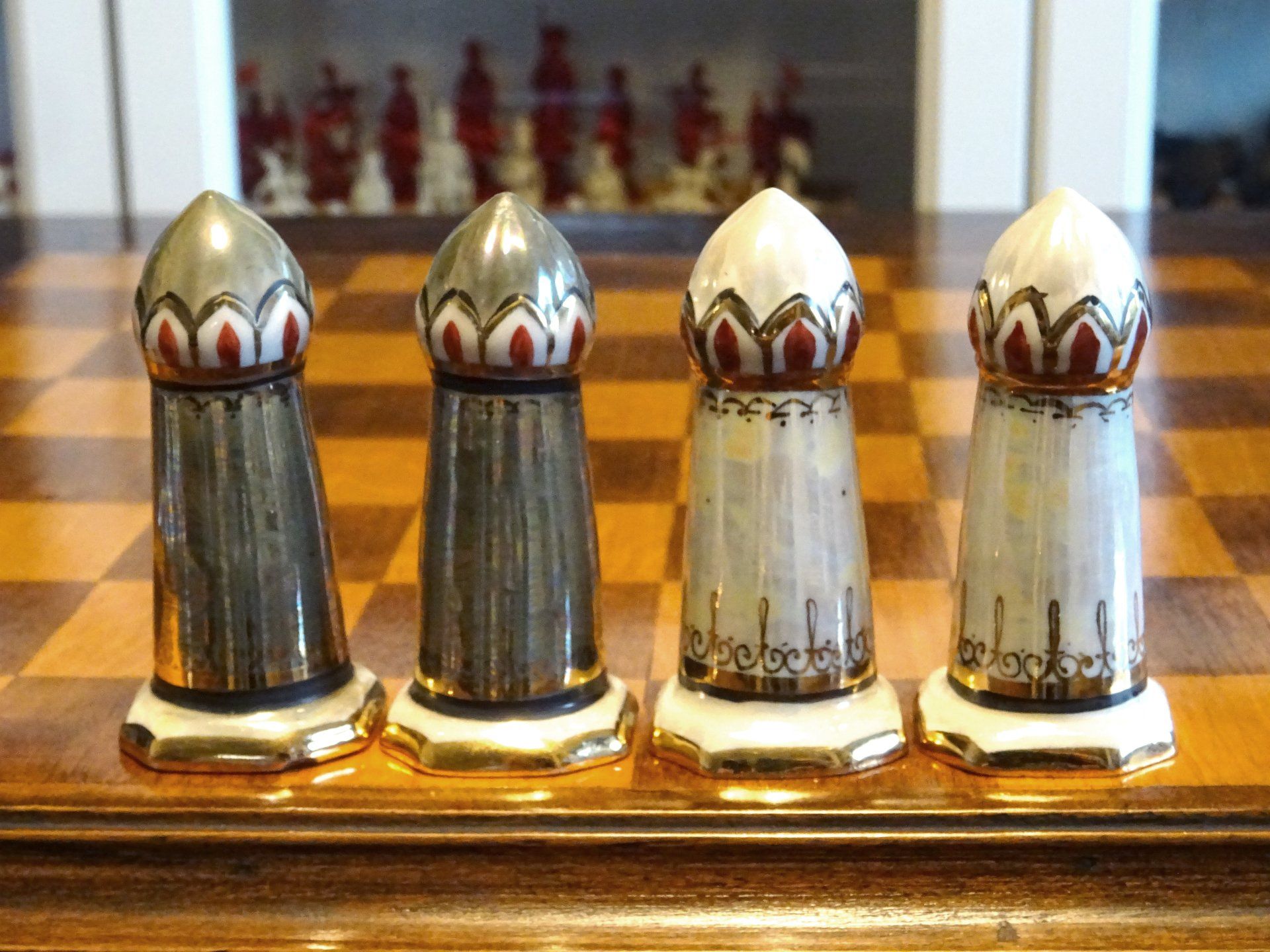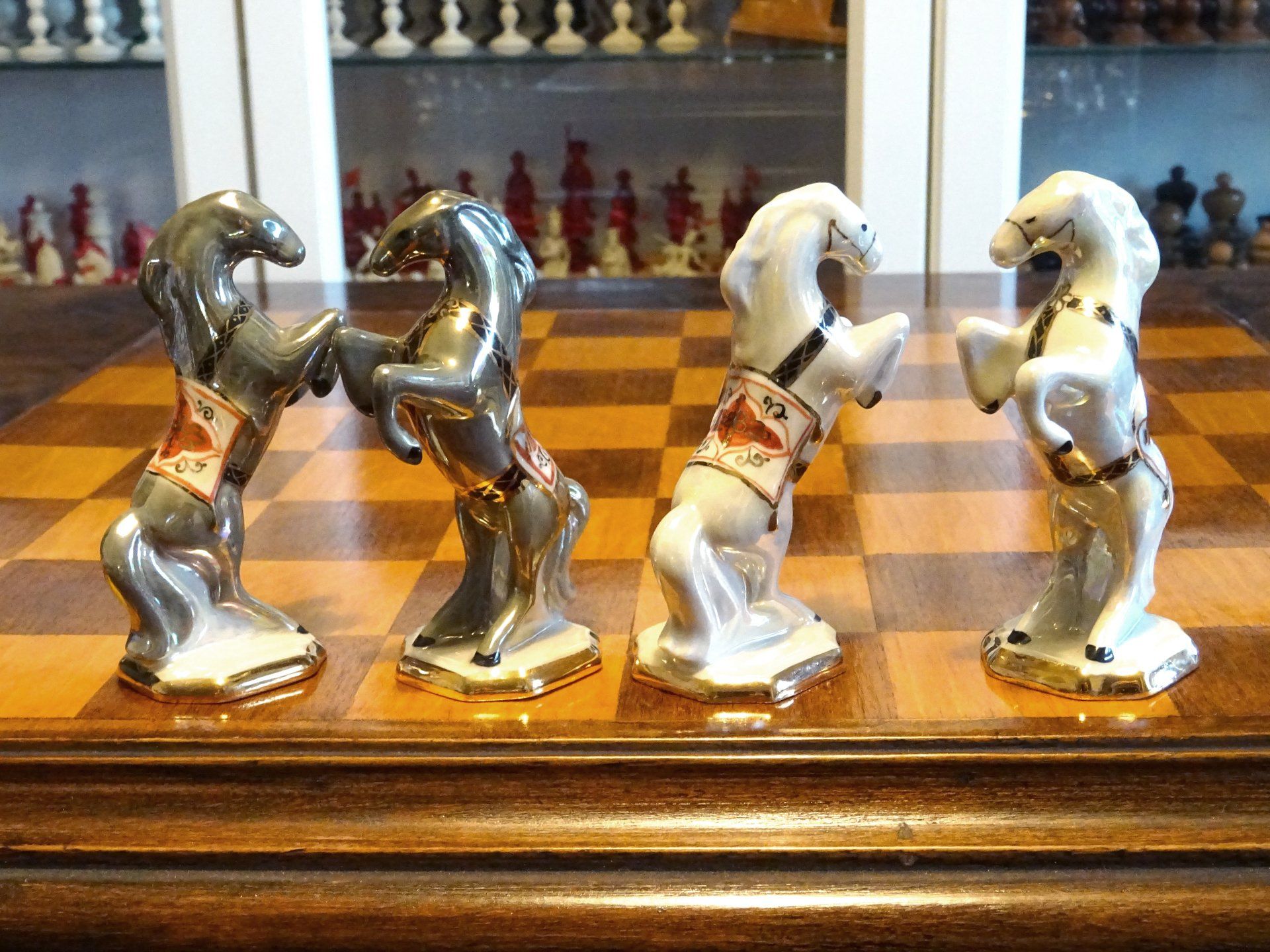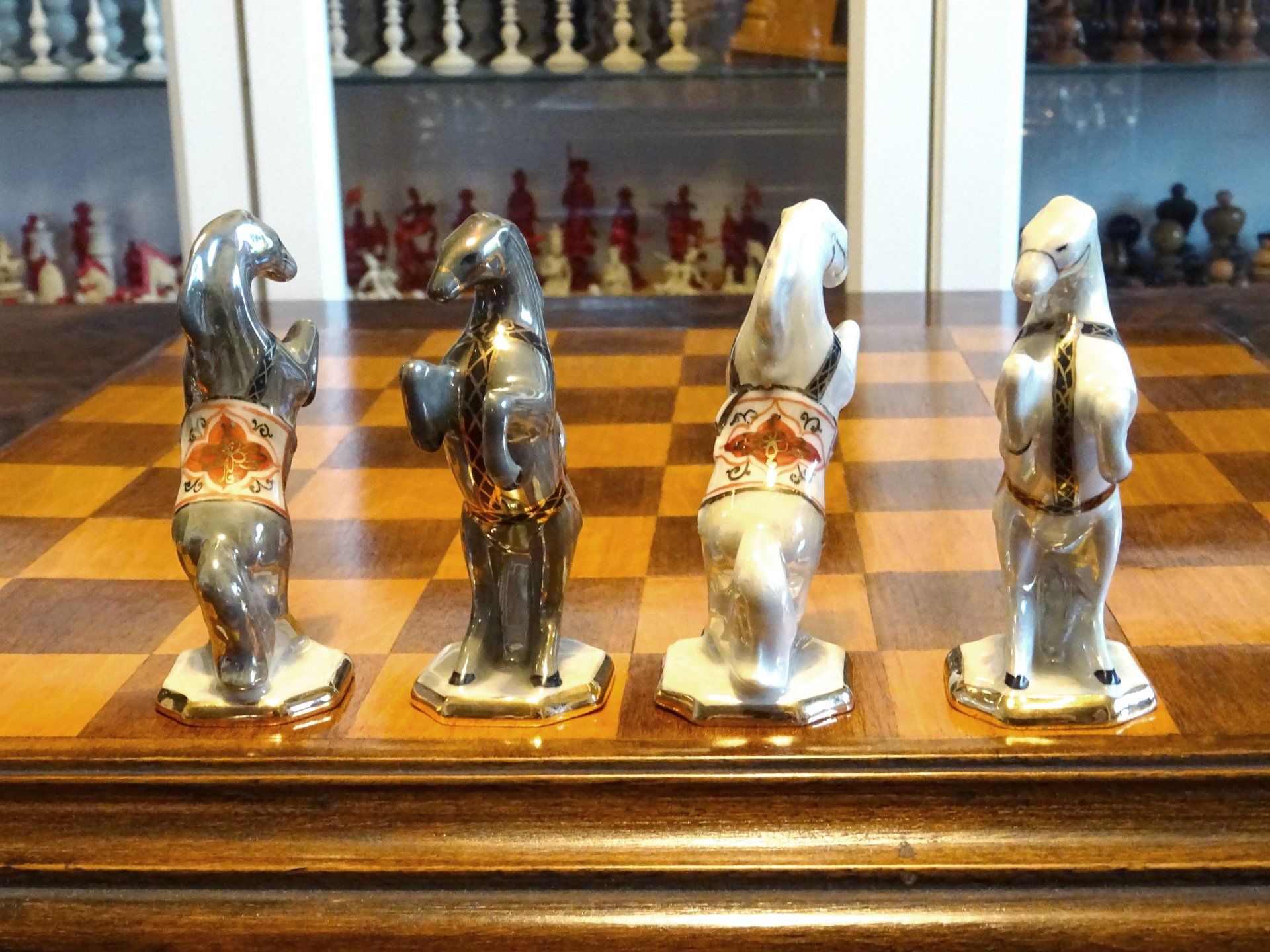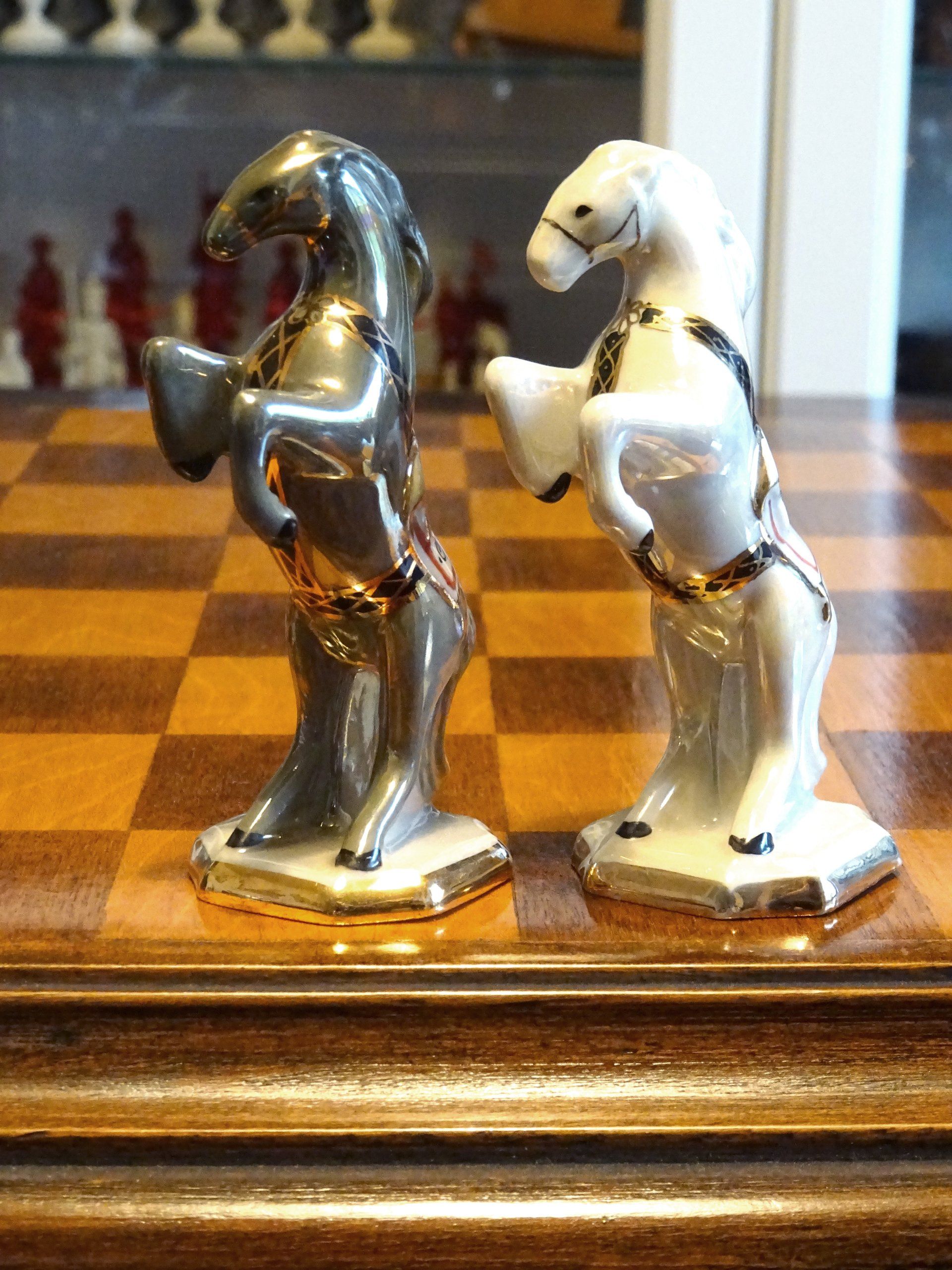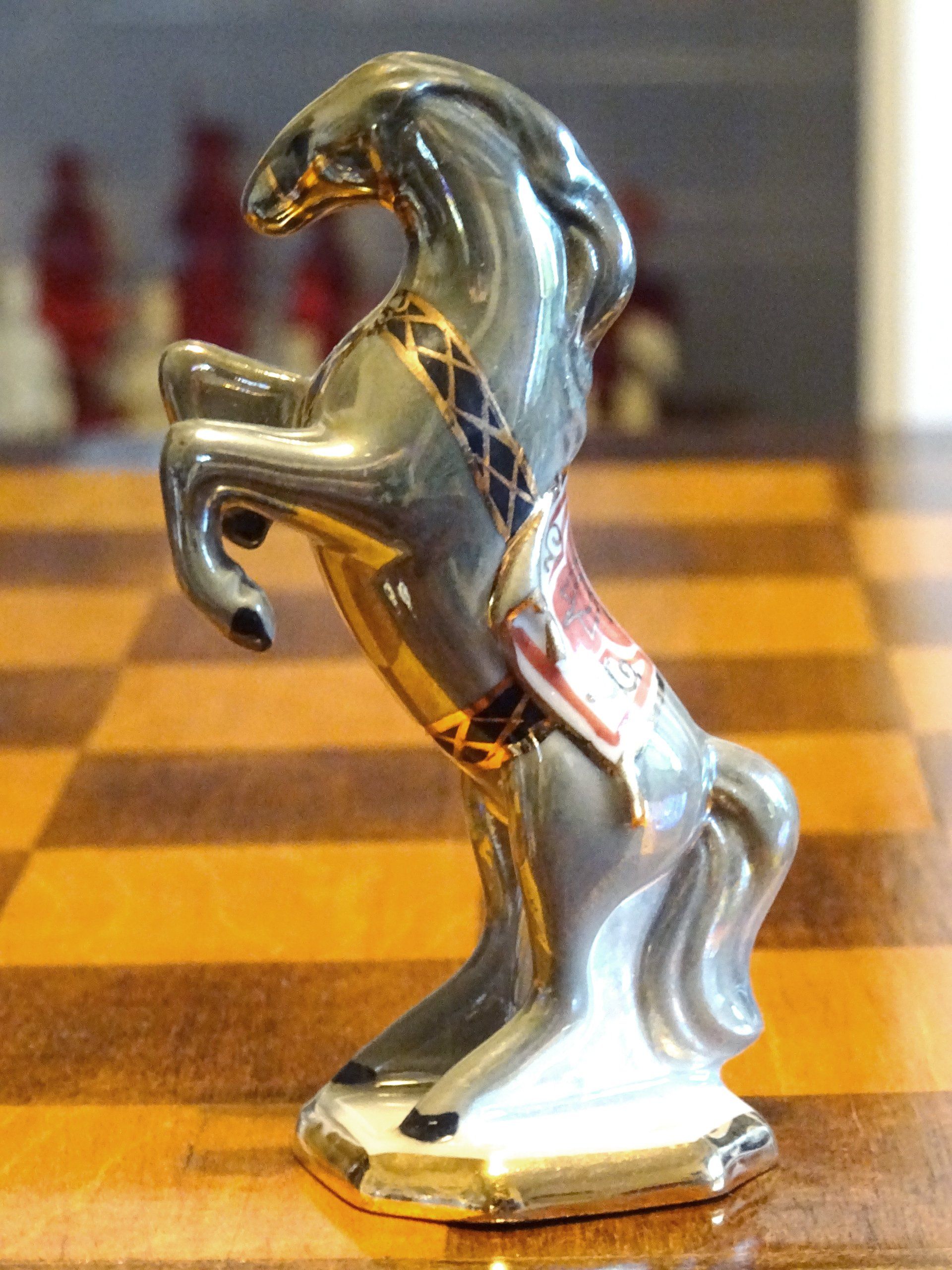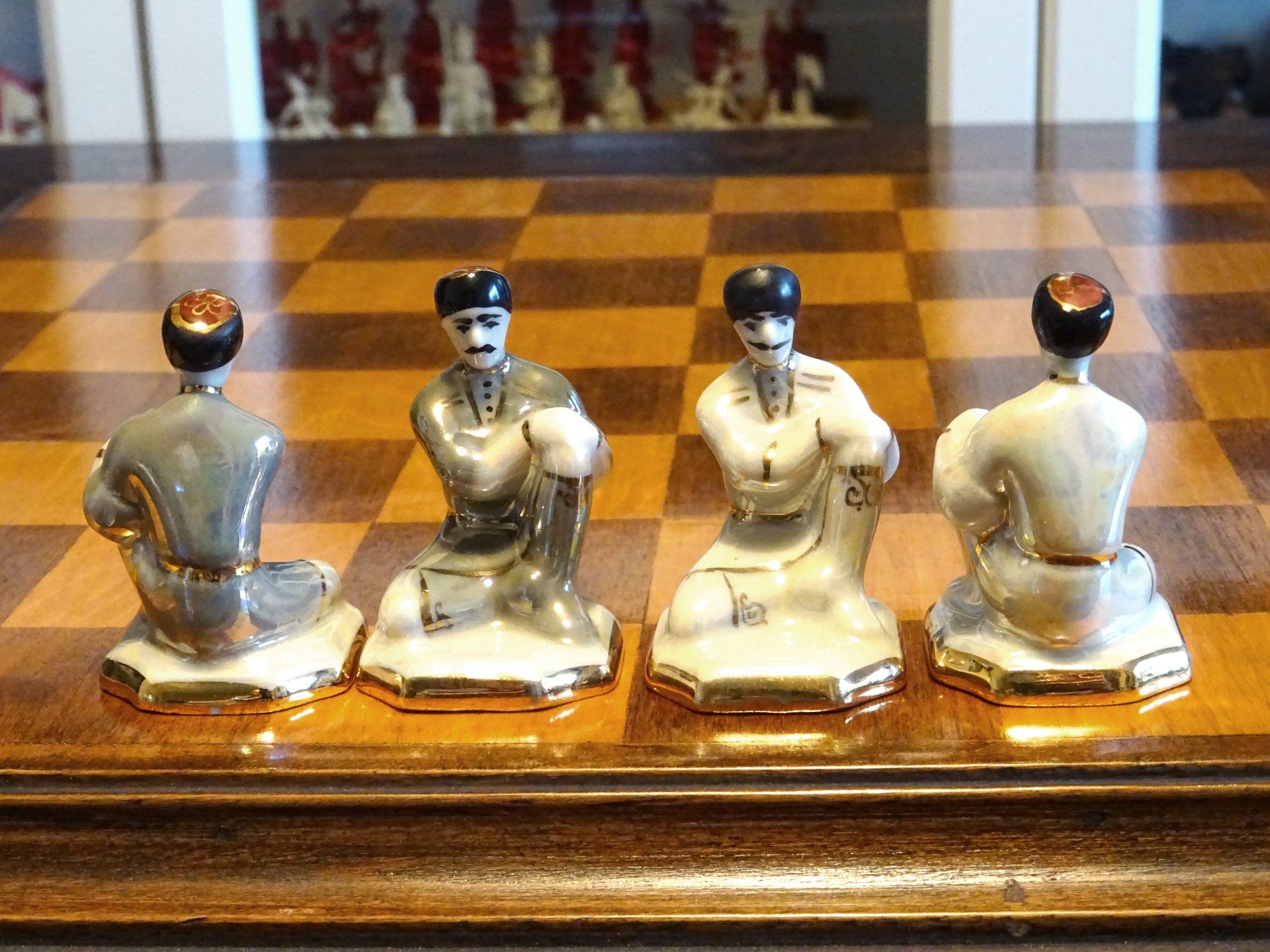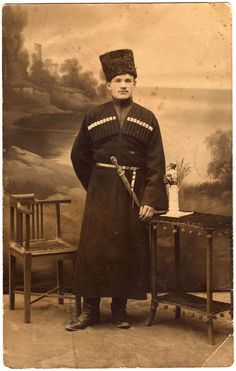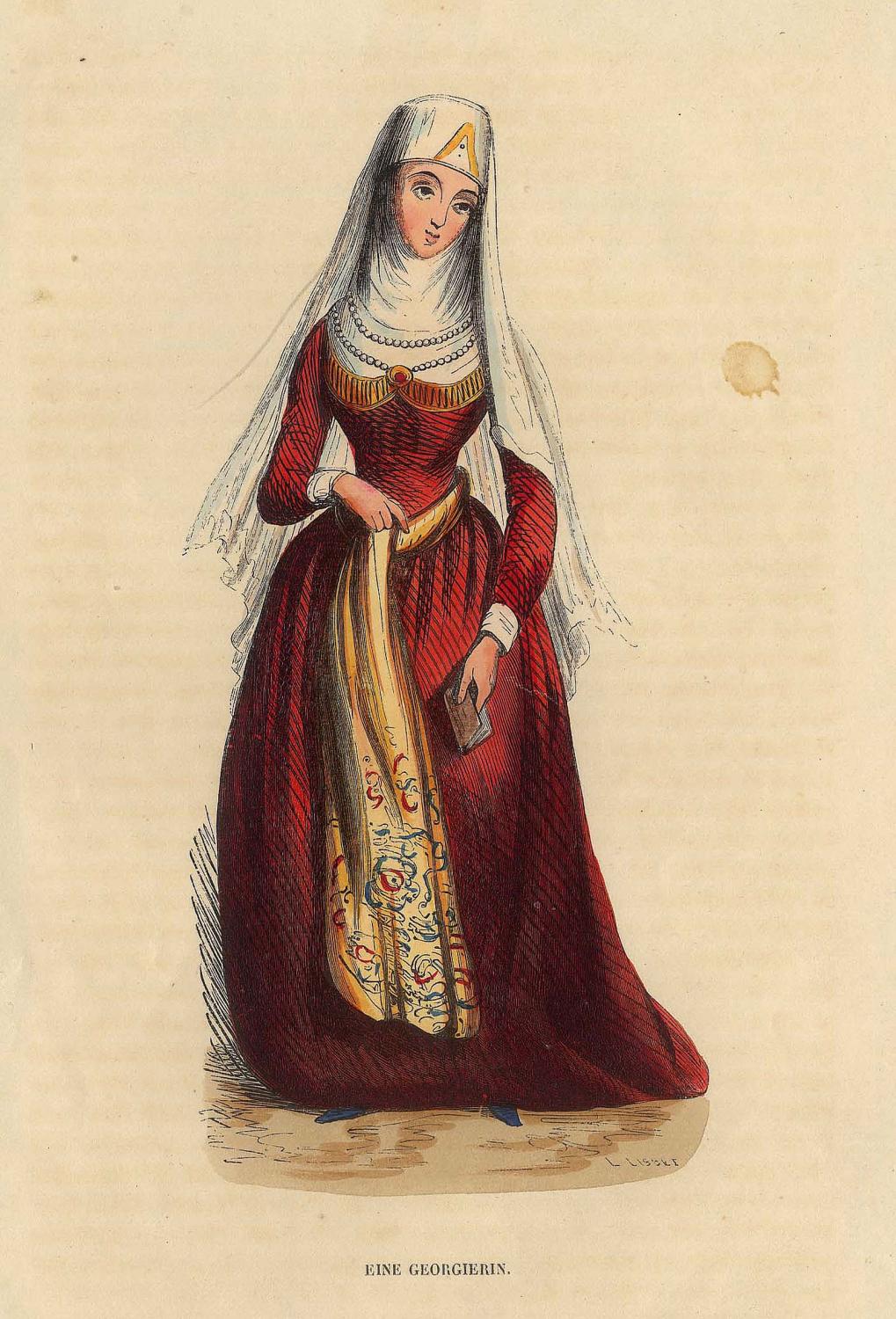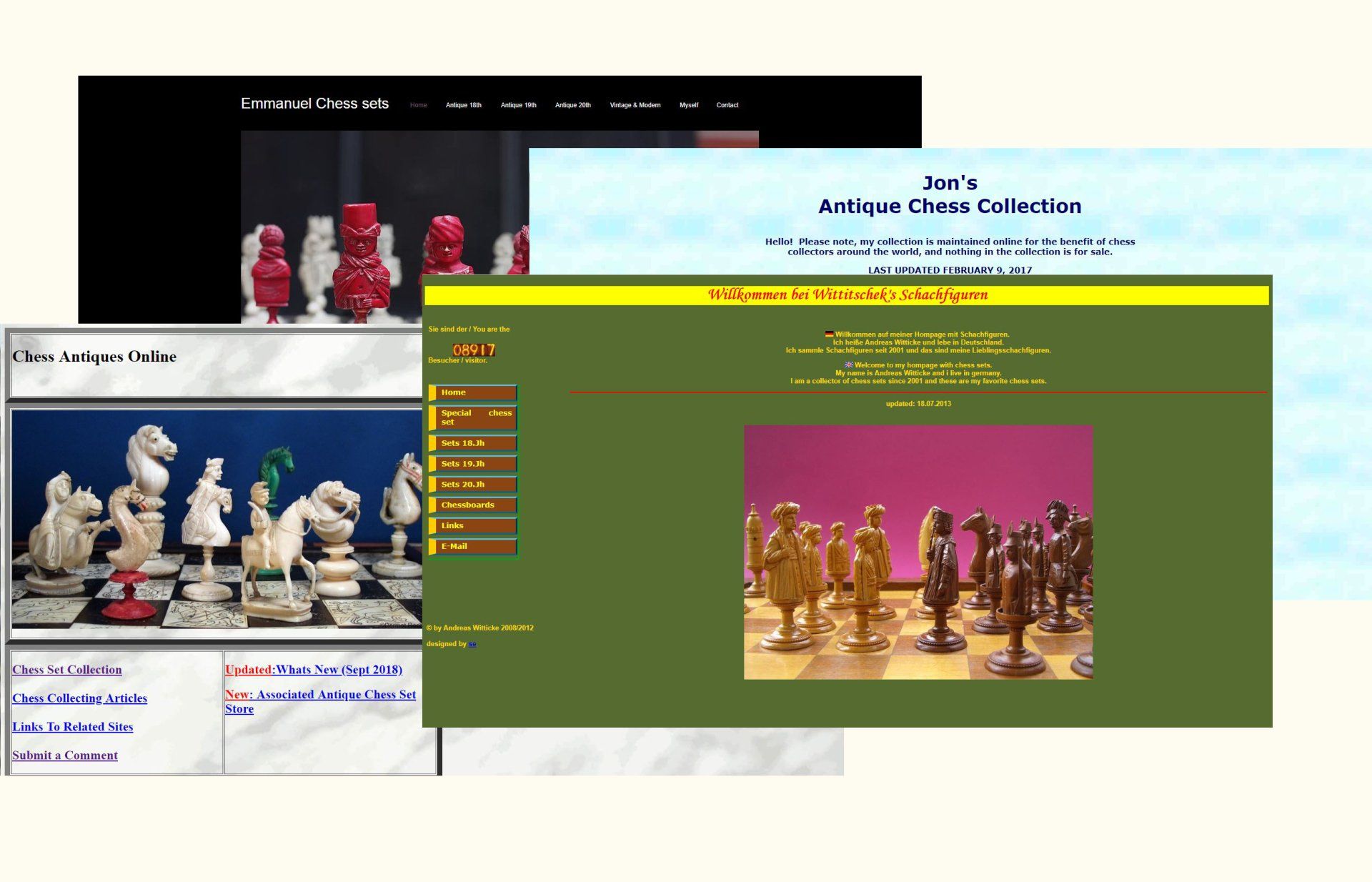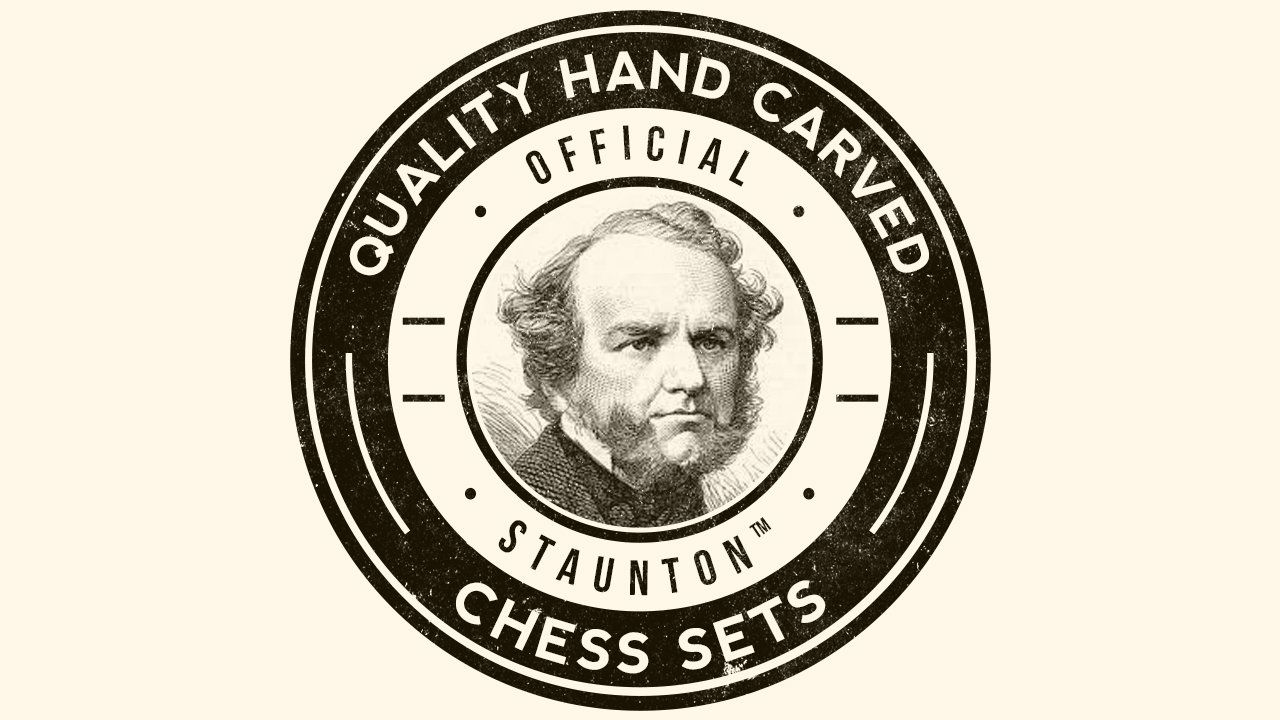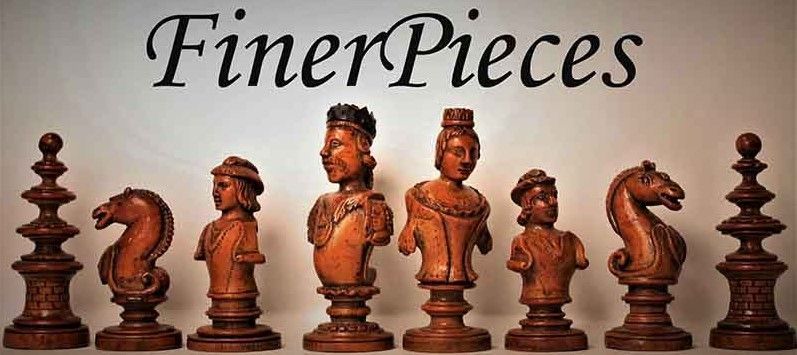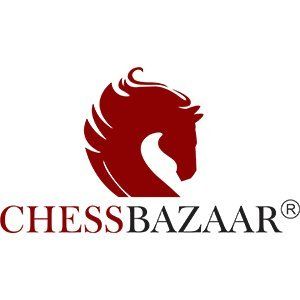Soviet Porcelain Chess Set (Zugdidi/Kislovodsk), ca. 1980
A Soviet porcelain set from the 1980's with a king size of slightly more than 10 cm. One side in white, the other side stained in dark grey.
According to Isaak Linder, the design goes back to Georgian porcelain artists from the Zugdidi Porcelain factory in Zugdidi/Georgia (Linder, Schach - Schachfiguren im Wandel der Zeit, p. 83, 122-125). However, the set shown by Linder differs slightly from this set insofar as the bishops are wearing capes over their heads rather than hats and also in the colours, which seem to be much darker in the set attributed by Linder to the Zugdidi porcelain factory. Similar sets were also sold under the brand of the Kislovodsk porcelain factory, located some 200 miles away on the Russian side of the border.
The figural chessmen are shown in traditional Georgian or Caucasian dress. The kings are dressed in a "chokha", a name derived from the Persian language. Before the Persian invasion, these wollen coats were referred to as "talavari". In Russia this type of coat is named "cherkeska". It is a typical and very traditional type of garment and a Georgian symbol of pride, worn until today on many formal occasions. The chokha comes in four different types and forms part of the typical cossack uniform. A typical feature of the chokha are the cartridge holders on both sides of the chest called "masri". In former times these were used to hold paper cartridges for muskets, but with the advent of modern weapons these were replaced with ornamental bullets or cartridges calles "masrebi" or "gaziri". The uniform of the king is completed with a richly embroidered overcoat called "burka", a hood-like headdress wrapped around the neck called "bashlyk", a traditional hat called "papakha", usually made of wool or fur, and the traditional cossack dagger called "khanjali" worn on a belt. The queen is likewise dressed in the traditional dress of a rich Georgian woman. She is wearing a long dress called "kartuli", with a beautifully decorated belt. The traditional headdress consists, inter alia, of a white veil called "lechaki", a thin bolster, usually made of silk and cottong called "kopi" and a cardboard rim sewed with velvet called "chikhta". The rooks are shown as towers with onion shaped domes, the knights as rearing horses, which may be seen as a reference to the dzhigit horsemen among the cossacks, the bishops dressed as cossacks dressed with a closed burka wearing a bashlyk and a papakha and the pawns as sitting cossacks.





